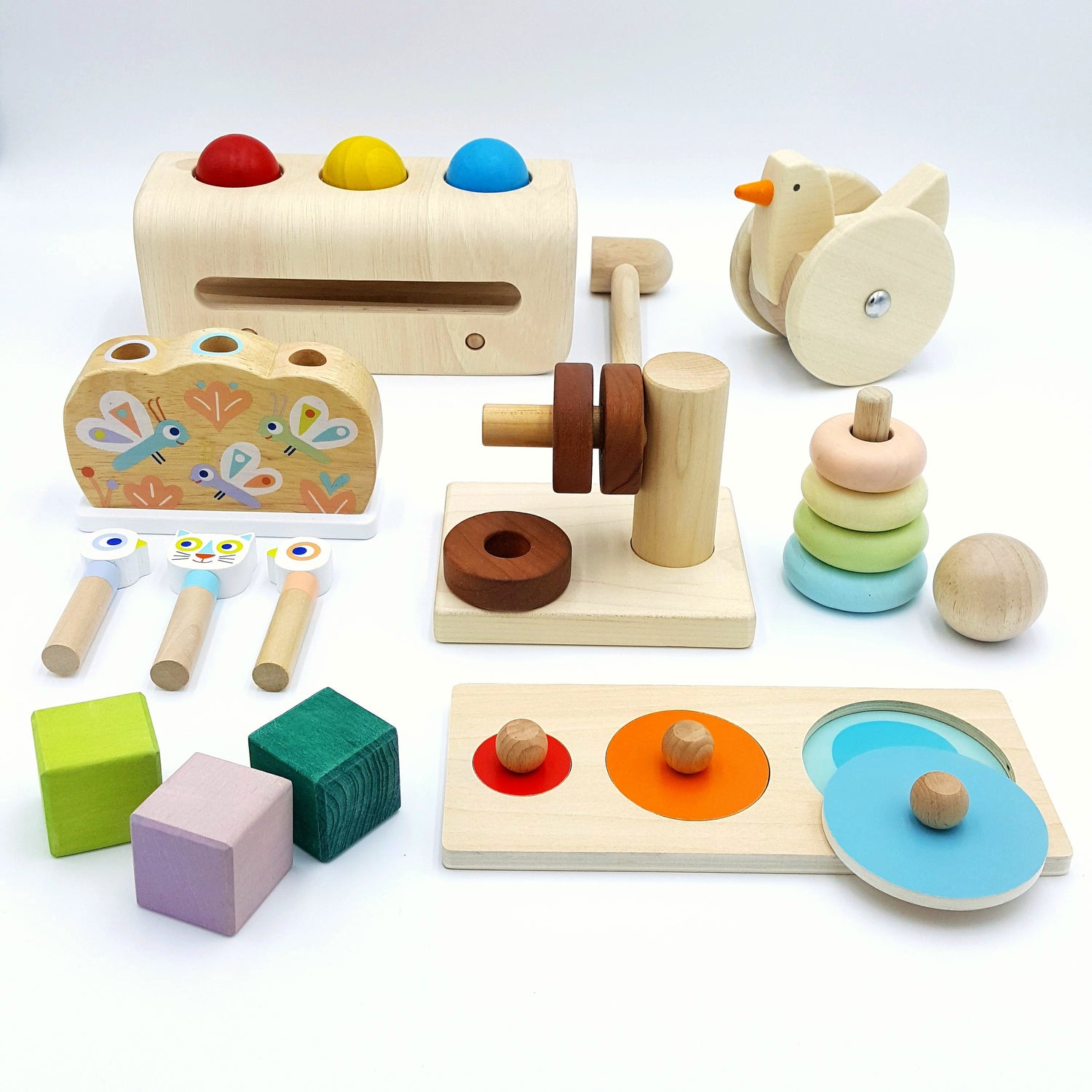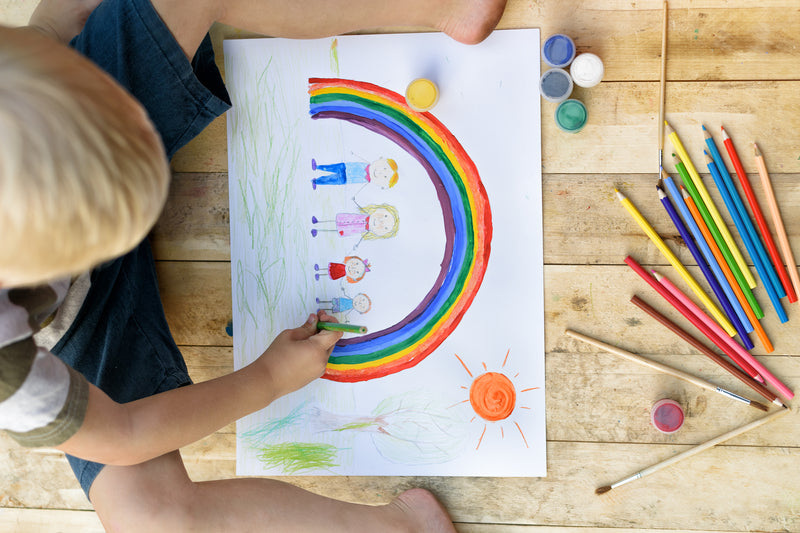Because we believe this to be such an important topic – we are writing this parent to parent. Simply sharing what we are doing to create an inclusive space for our children at home. We are intentional about creating an inclusive home so our children will feel safe and supported to be their true self. We also hope this will inform how our children go out into the world and create inclusive spaces for others.
I have two children. A five-year-old boy and a two-year-old girl.
I went into having children with an awareness of gender stereotypes and a mindset to not buy into them. However, I am also a straight white woman married to a straight male – both cisgendered. While we have some beautiful people in our lives with diverse sexual orientations and gender identities – we know that our own lived experiences limit our knowledge and awareness. As such, we know we are not doing it all right and in fact, we might be messing it up sometimes. But we are open to learning and growing in our approach to be an inclusive home.
We are also aware there is a range when it comes to how families create inclusive homes. Some families are raising their children with complete gender neutrality. We are not one of those families. Our children have names which reflect their sex at birth and my daughter’s room is wallpapered with pink flowers (it’s just so pretty!).
But – these are some of the things we are being conscious of in our home:
1. Understanding Gender Pronouns
Something we are trying to get better at is being aware of pronoun use and practicing the use of gender neutral pronouns. This is something that as a parent of a baby, meeting other parents with babies, we have ALL the opportunity to practice. Think of the number of times you’ve found yourself wanting to ask a parent about their baby but then aren’t sure what pronoun to use so ask, “Do you have a boy or a girl?”.
Next time, practice using the pronoun they/them/their. For example, “How old are they?”, “What time do you put them to bed?”, or “What is their nap schedule?”. Parents will respond with the pronouns they are using with their child, and you can follow suit.
Something I am also practicing is not placing value on the gender of my own children when they meet someone new. I have challenged myself to not correct people if they call my daughter, “he/him”. I mean, for now her gender identity is as I assume it to be. Maybe they will grow up and identify as he/him or they/them. So, who am I to be stuck on making sure people address them on my assumed gender identity?
Some of you may also be new to the fact there is a growing category of neopronouns that are used as alternatives to they/them/theirs pronouns. Our children will grow up in a world of pronoun inclusivity and they will expect you to respect their own identity and those of their peers. Here is a fantastic tool for learning about neopronouns and practicing their use, including how to ask questions for clarity in a variety of social situations.
2. What Does 2SLGBTQI+ Stand For?
Being aware of inclusive terms and language is an important part of being an ally. When I first became aware of inclusive language and terms, LGBTQ was the standard acronym. This has now expanded to be more inclusive, which may continue to evolve over time. But for now – the term most often used is 2SLGBTQI+.
What does this stand for:
2S: Two-spirit
L: Lesbian
G: Gay
B: Bisexual
T: Transgender
Q: Queer
I: Intersex
+: Additional terminologies
The Canadian organization, Egale, does incredible work in the space of 2SLGBTQI+ rights and provides resources on terms and concepts as well as resources on ongoing 2SLGBTQI+ human right and legal issues.
3. Proper Terminology of Body Parts
My daughter is adamant she has a penis. Adamant.
While I do correct her statement – I do not correct her by saying, “No, girls have a vagina and boys have a penis You are a girl so you have a vagina”. I simply state, “this body part is called a vagina”.
Being a family that talks openly about body parts (using correct terminology) is an important element of creating an inclusive space for children. If your child grows up and feels their assigned body parts do not match their gender identity, you want to make that conversation as easy as possible for them. If you have used language and had conversations that normalizes the difference between a body part and gender identity, you have opened the door for your children to feel safe and seen. This may also go a long way in reducing the feelings of shame that youth who are questioning their sexual orientation and/or gender identity often feel.
4. Read Inclusive Books
We know reading books that include diverse people, cultures, and experiences is an important exercise for both nurturing inclusive behaviour in our own children as well as ensuring systemically minoritized children feel seen. There are many beautiful books out there that represent diverse families, diverse sexual orientations, and diverse gender identities.
Some of the books my son would always reach for as a little one were:
Julian is a Mermaid, My Two Dads and Me, and Marlon the Bunny
Here is a more extensive list of books for your little one that makes visible gender diversity.
5. Explain Pride Month to your Child
This year we made the decision to hang a pride flag outside our home. We chose the Progress Pride Flag as we understand this to be the one that integrates representation from the majority of the different pride flags.
Planting the beautiful garden flag with my five-year old prompted the conversation around the need for Pride month. We talked about Marlon the Bunny (from his book) and how the Stink Bug said he couldn’t marry another boy bunny. How there are people in the world who are sometimes made to feel bad for being who they are. How we hang this flag to show we support people to love and be whoever they want.
**I appreciate this conversation does not fully get into the importance of the month of Pride, but it is an example of the many ongoing conversations we have in our house.

6. Go to the Drag Queen Story Hour
Just go. It’s a beautiful and fun time for your children.
7. Gender Neutral Toys
If you’ve ever walked into a Toys ‘R’ Us – it is palpable how much work needs to be done in the toy industry to disrupt the gender stereotypes it reinforces.
Fortunately, there are many ways your family can say “stuff you” to the gender stereotyping toy industry.
One way is to offer your child toys that have traditionally been provided to only one sex. Since my son was young (and now for my daughter), our play space includes a toddler kitchen, toddler cleaning tools, a dollhouse, dolls and doll clothing, a doll highchair and crib, trucks and cars, trains and railroads, robots, and dinosaurs. Both children are exposed to and encouraged to play with toys that would traditionally be provided to the opposite sex.
Another way is to provide gender neutral toys, which are proven to have many developmental benefits. These toys also allow children to break free of gender stereotypes in play and pursue their own interests.
If you are looking for some gender neutral toys that provided the added benefit of being age specific for development, you can check out the toy rental subscriptions from Toy Exchange Club.

You might also want to look into Montessori learning for your children. This style of learning encourages play that fosters independence, self-directed play and independence.
Because my children are still so young, I have no idea whether this approach will have it’s intended impact. As parents these things are sometimes just out of our hands. I do know my son would much rather watch Gabby’s Dollhouse than Transformers – and that’s just fine by us.


